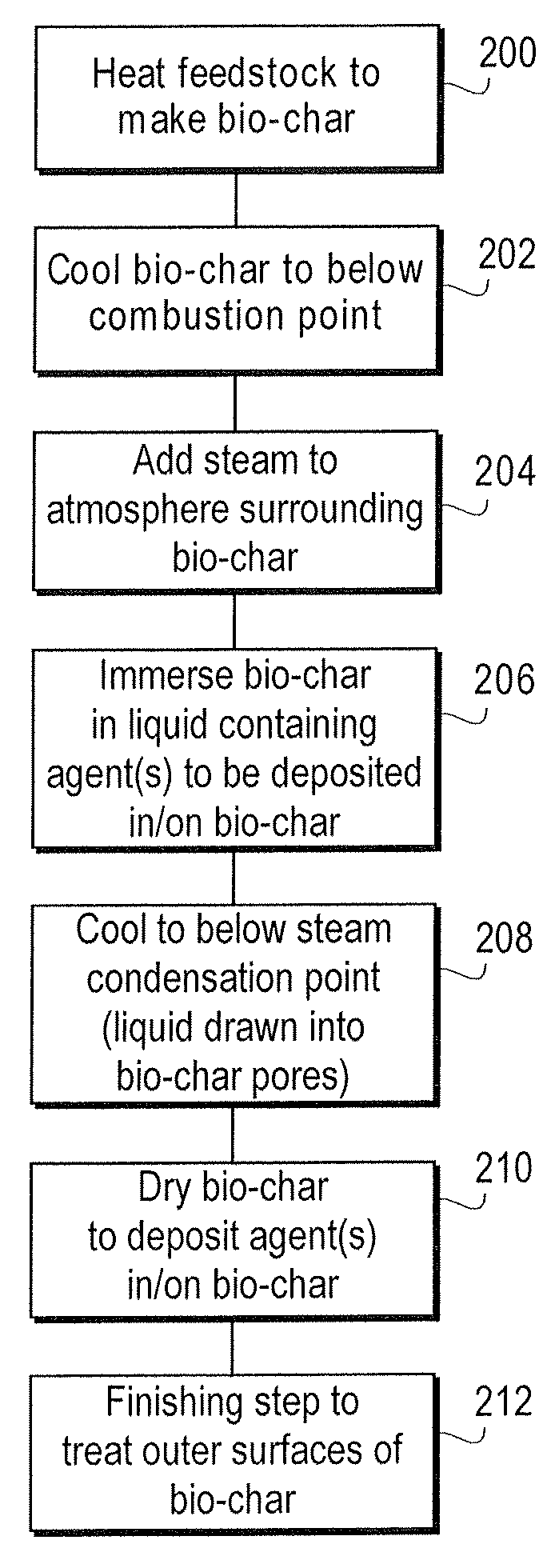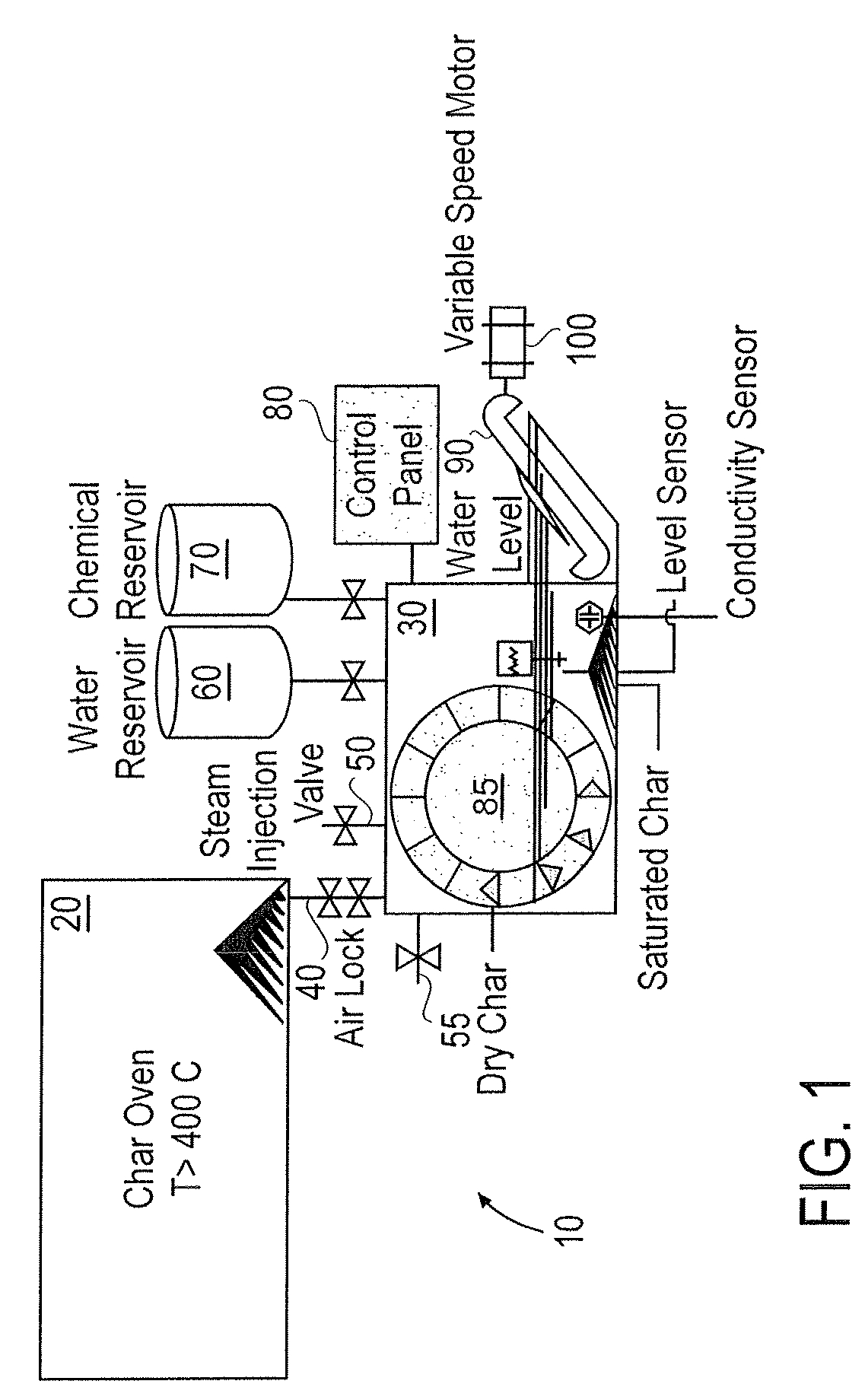Method and apparatus for depositing agents upon and within bio-char
a biochar and agent technology, applied in the direction of potassium fertilisers, water/sewage treatment by ion exchange, separation processes, etc., can solve the problems of long time it will take to be transported out into soil, and the difficulty of deep embedding of agents
- Summary
- Abstract
- Description
- Claims
- Application Information
AI Technical Summary
Benefits of technology
Problems solved by technology
Method used
Image
Examples
Embodiment Construction
[0016]In one embodiment, the invention relates to methods and apparatuses for depositing agents relatively deep within pores of bio-char. Most current methods are only capable of depositing agents on the outer surface of bio-char or, at most, only slightly within its pores. In contrast, embodiments of the invention can deposit agents approximately 20-25 microns, or more, into bio-char pores. Bio-char is first produced in an airtight oven by heating biomass feedstock, commonly to about 400° C. or more. The bio-char is then cooled and steam is diffused into the pores of the bio-char. The steam-laden bio-char is immersed in a liquid bath carrying soluble agents that are to be deposited in the pores of the bio-char. The liquid bath cools the char to below the condensation temperature of the steam, whereupon the condensing steam generates a partial vacuum within the pores, drawing the liquid into the pores. The bio-char is then removed from the liquid bath and dried so that the liquid wi...
PUM
| Property | Measurement | Unit |
|---|---|---|
| depth | aaaaa | aaaaa |
| pressure | aaaaa | aaaaa |
| temperatures | aaaaa | aaaaa |
Abstract
Description
Claims
Application Information
 Login to View More
Login to View More - R&D
- Intellectual Property
- Life Sciences
- Materials
- Tech Scout
- Unparalleled Data Quality
- Higher Quality Content
- 60% Fewer Hallucinations
Browse by: Latest US Patents, China's latest patents, Technical Efficacy Thesaurus, Application Domain, Technology Topic, Popular Technical Reports.
© 2025 PatSnap. All rights reserved.Legal|Privacy policy|Modern Slavery Act Transparency Statement|Sitemap|About US| Contact US: help@patsnap.com



